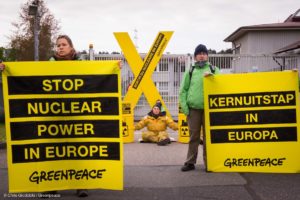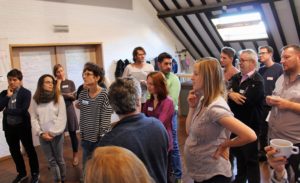Dreams of a Decolonised Australia
What would Australia look like if it acknowledged its empire, racism, and white supremacy – and built different infrastructure for the future? This is the speculative premise for the short-fiction anthology After Australia, written by First Nations writers and writers of colour released on 9 June.
After Australia is part of a ground-breaking new approach to building equity, and an outcome of the Stories from the Future project led by Diversity Arts Australia, the country’s key national organisation for racial equity in the arts. Diversity Arts initiated the project as a creative form of consultation with creatives of colour and First Nations artists, aiming to uncover ideas for advocacy and action, much as science fiction writers have inspired real scientists to push towards previously unimagined breakthroughs.
“We wanted to focus on making a plan for the arts,” says Diversity Arts’ Executive Director Lena Nahlous. “Looking forward and imagining 2050 to see what the arts might look like. But we also wanted to engage people in creating a vision of what the future needs to be.”
These stories have arrived in an explosive moment for racial justice, even before the anthology was launched, pre-orders were placing it on bestseller lists in Australia. Though written in 2019, Omar Sakr’s ‘White Flu’ presents an eerily prescient vision of a pandemic that sweeps the world eradicating only white people and causing race riots. In Michelle Law’s ‘Bu Liao Qing’, sea-level rise has caused the Sydney Opera House to flood and squatters have moved into the balconies of its famed concert hall. Through these speculative lenses, the writers explore how the lives of First Nations people and people of colour might look in the future.
Speculative fiction as the basis for advocacy
As an organisation working in the creative sector, Diversity Arts often uses a strategy of ‘art as advocacy’ in its work. Rather than using a top-down approach which commissions content to fill a creative brief for campaigning, the organisation empowers artists to design their own response, trusting the arts community to generate powerful inspirations for change. Diversity Arts commissions artists of colour to create work responding to their lived experiences, such as incidents of racism, tokenism or stereotyping, and then disseminates them as a way of raising awareness about these issues. The organisation also engages communities creatively in generating ideas for its strategic direction, and Stories from the Future is one such creative consultation project.
Diversity Arts turned to Sydney University education and social work lecturer Dr Remy Low, an experienced futuring practitioner, to facilitate the workshops. Nahlous and equity and education consultant Dr Paula Abood collaborated with Low to develop a five-hour workshop that’s been delivered across Australia, involving 150 participants to date (it’s moving online during COVID-19).
Leaving the problem mindset behind
The workshops wanted to discover the problems creatives of colour were experiencing, and what they felt should be done about them. However, they set out to go beyond the two most common reactions to intractable problems, what Dr Low calls ‘hopeless’ or ‘reactive’ responses.
“Commonly, there’s a certain kind of hopelessness, like “things aren’t going to change, this is really awful”,” he says. Or the other response, which is equally valid and common, is a reactive response. “This person or this group of people are the problem, or my boss is the problem, or this particular person has a problem. So I want to destroy that thing.”
To invoke a less reactive response, the workshop invites participants to reflect on their identity now, the personal histories and ancestries that have contributed to that identity, and the thought-provoking idea that one day they will be ancestors themselves.
“A lot of people joke that the workshop doesn’t feel workshop-y because we don’t get to the whiteboard until right at the end,” says Low. “And that’s intentional, you know, because if we had done the kind of action planning stuff towards the beginning, without that long process in the build up to that, I think the tone of the planning process and action planning would be very different. It would be much more reactive to what’s in front of us, which isn’t wrong, but it is also quite limiting.”
“This is a far better structure than more passive consultations”, says Nahlous. “And you can make consultations less passive. But this was actually a way of using the arts themselves to be creative and reflexive, and to get artists and creative workers involved in the process through this series of exercises. It takes them outside of the everyday and opens things up.”
The Workshop
The workshop begins with a welcome and acknowledgement of country, which is a practice that’s now routine in Australia – workshops, school assemblies, politician’s speeches, weddings and other public gatherings acknowledge the traditional owners of the land on which the event is taking place.
Typically it takes a standard format, for example in inner-city Sydney: “We are gathered here today on the traditional lands of the Gadigal Clan of the Eora Nation. We pay our respects to their Elders past and present and acknowledge that this land was never ceded.”
Stories from the Future workshops then open with ‘Stories about Lineages’. Participants (and facilitators) are invited to bring an object that connects them to their families, communities, and/or cultures and to describe the object and share a story associated with it.
“Importantly, it’s not an object that necessarily is stereotypically ‘cultural’ but just an object of significance to them in the past or the present,” says Low. “We start with that as a way for participants to get to know one another, through the object a little bit, but also for participants to be grounded and reminded about the things of significance that have happened to them. The people and places that have been really important to them, and also as a way of reminding us of our debt to First Nations people, whose lands we occupy for these workshops. Just to remind ourselves of the importance of place and people and relationships.”
In Part 2 of the workshop, participants are invited to reflect on what concerns them most about the arts and screen sectors today in terms of ethno-cultural diversity and marginalised experiences. They write these concerns down on post-it notes, and stick them on the wall around the date ‘2020’. These are then discussed by the group, often touching on the commodification and exploitation of diversity, tokenism, stereotyping, exoticism, frustration at an enforced competition with peers, under resourcing and inequitable power structures. Participants also often share quite personal experiences of racism and discrimination. As a facilitator, Low is careful to keep the discussion grounded and attentive. For example, he encourages participants to pause to let things sink in after someone has spoken, and uses a small bell that chimes and is allowed to fade before the next person speaks.
“The stuff that we talk about is really heavy, it’s really loaded, it can be overwhelming,” said workshop participant Justine Youssef. “But he’d bring us back to our breath and back to the temperature we feel in our body and back into the space, back into the room and we could touch on what was heavy and loaded, but we could come back and speak about it.”
In Part 3, called Letters from the Future, participants are invited to imagine themselves as ancestors in a 2050. They picture a descendant looking back over the last 30 years and write a letter to themselves as ancestors, thanking themselves for the actions they took to create a better 2050. “They draft a letter addressed to themselves, which is quite an uncanny experience,” says Low. “But also, for a lot of participants, quite a confronting or moving experience.” One participant commented that this activity had ‘unmoored’ them from the constraints of the present.
In Part 4, the whiteboard final comes out. Participants engage in a process of ‘backwards projecting’ to plot out the steps that will need to be taken to reach the equitable vision of 2050, focusing primarily on the arts, but engaging with whole-of-society issues.
“We’ve got a timeline on the wall,” says Nahlous, “With dates for 2030, 2040, 2050 and people go and stick post-it notes along the timeline. And then we group them together, and we talk about them and unpack them.” By the end of the workshop, a rough potential timeline has been developed.
Clear visions for the future
The Stories from the Future workshops seem to unlock a new sense of perspective in participants. For example, Moreblessing Maturure appreciated “the approach that it took going from the personal and acknowledging not only the land that we’re on and the custodians of the land that we’re on, but also the people before us that got us to where we are. And the people around us currently who we coexist with, the people that we value, that we love, that we cherish. And how all those different circles influence where we’re going to be as artists and inevitably the art that we make in 50 years’ time.”
Many participants came away with very clear visions of the changes they want to see, such as Amelia Zhou who looks forward to Australians “being educated in languages other than English, not having Indigenous histories erased from our curriculum, being exposed to literatures that are not only about white Australian voices but include second generation Chinese Australian or Korean Australian experiences.”
“There should be consultations with specific communities,” says participant Bilal Hafda. “I think if you have funding that’s going to a space you should be consulting with the elders in that space, with the community members who know best what young people need, what the community needs. There’s no be all and end all for running artistic programs.”
Six Stories from the Future workshops have been held in four states of Australia so far, attended by around 160 people. Alongside the After Australia anthology, many pieces of speculative fiction arising from the workshops have been published in the media and four short films featuring interviews with workshop participants have reached around 16,500 people online. A researcher embedded in each workshop is currently synthesising the ideas generated into a report containing policy recommendations and a combined ‘Timeline to 2050’, such as incorporating stories from diverse cultures in arts projects, creating connections with Australia’s 65,000-year Indigenous history and collaborating with community elders. This report will go back to participants for comments and once finalised, it will form the basis for Diversity Arts’ advocacy messaging and inform the organisation’s strategic direction for the next decade and beyond. The Stories from the Future workshops create a strong vision of what we are collectively working towards in the long term, beyond our reactive human responses to current problems, and also provide a practical timeline towards making the vision a reality.




